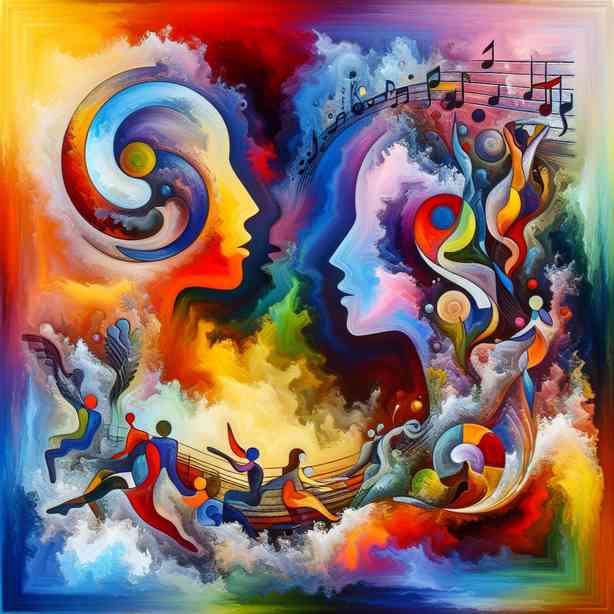
Art is a powerful medium that transcends boundaries, allowing individuals to express emotions, thoughts, and ideas. When we engage with art, we enter a dialogue—not only with the artist but also with ourselves and the world around us. The concept of art as a conversation encapsulates this dynamic interaction, revealing the multifaceted nature of artistic expression and interpretation.
The idea that art offers a platform for dialogue is rooted in its ability to provoke thought and evoke feelings. Each piece of art, whether it be a painting, sculpture, or performance, carries with it the artist’s intention, message, and story. However, the experience of art does not end at the canvas or stage. Viewers bring their own experiences, beliefs, and emotions into the interaction, creating a rich tapestry of perspectives. This interplay highlights the essence of art as a shared conversation rather than a one-sided communication.
Moreover, the art conversation expands beyond the initial creator-viewer interaction. The presence of critics, historians, and fellow artists adds layers of discourse, enriching our understanding and appreciation of the work. Each critique or analysis serves as a new voice in the conversation, offering alternative interpretations and stimulating further discussion. This collective engagement fosters a deeper connection not only to the artwork but also to the broader cultural and social context in which it exists.
In this light, art becomes a catalyst for dialogue about significant societal issues. Artists often use their work to comment on topics such as identity, race, gender, and politics. By confronting these themes, they invite viewers to reflect on their own beliefs and experiences. This is where art’s transformative power lies—within its ability to encourage critical conversations that challenge the status quo, fostering empathy and understanding across different perspectives.
The modern landscape of art has further evolved this notion of conversation. With the rise of digital platforms, artists and audiences alike can engage in real-time dialogue, transcending geographical boundaries. Social media, in particular, has democratized art discussions, allowing anyone with an internet connection to participate in the conversation. This accessibility has led to a more inclusive artistic community, where diverse voices can be heard and valued.
For instance, online forums and virtual exhibitions provide a space for immediate feedback and interaction. Artists can share their thoughts and processes, inviting feedback from audiences in ways that were not possible in traditional galleries. This dynamic fosters a collaborative environment where ideas can be exchanged freely, enriching the conversation surrounding art and its impact on society.
However, the dialogue initiated by art is not always comfortable. Art can challenge us, provoke discomfort, and confront our established beliefs. This inherent tension is what makes art so profound. The discomfort experienced in response to a piece can spark necessary conversations about our assumptions, biases, and the world we inhabit. This transformative dialogue encourages growth and reflection, pushing us to confront uncomfortable truths.
Additionally, educational institutions are beginning to recognize the significance of fostering conversations about art. Integrating art education into curriculums encourages students to not only create but also reflect and discuss. Through group critiques and collaborative projects, students learn to articulate their thoughts and engage with differing perspectives. This early exposure to dialogue through art empowers individuals to become thoughtful contributors to broader discussions in society.
In conclusion, the concept of art as a conversation emphasizes the importance of dialogue in understanding and appreciating artistic expression. Each interaction with art is unique, shaped by the viewer’s experiences and the cultural context in which the art exists. This ongoing dialogue not only enriches our understanding of the artwork itself but also serves as a conduit for addressing vital social issues.
Conversing through art empowers us to reflect on our identities, beliefs, and the world we live in, ultimately fostering a more connected and empathetic society. As we engage with art, we must remember that we are part of a larger dialogue—a conversation that spans generations, cultures, and perspectives. It is through these conversations that we can truly appreciate the power of art as a mirror reflecting the complexities of our human experience. As we continue to explore and engage with art, let us embrace the diversity of voices and let every moment of dialogue enrich our collective journey through the world of creativity.


